Mercury DTS (Digital Throttle and Shift) controls integrate advanced throttle and shift technology, part of the SmartCraft system, offering smooth shifting and instant throttle response for enhanced boating performance. This manual provides detailed guidance on installation, operation, and troubleshooting to ensure optimal control and safety while operating your boat.
1.1 Overview of the Mercury DTS System
The Mercury Digital Throttle and Shift (DTS) system represents a cutting-edge advancement in marine control technology. Designed to enhance boating performance, DTS controls offer smooth, quiet shifting and instantaneous throttle response, eliminating hesitation. This system integrates seamlessly with Mercury’s SmartCraft technologies, providing an intuitive user interface and advanced features like Active Trim. Available in panel, side, and dual-handle console mounts, DTS controls cater to various boat configurations, supporting single to quad engines. The system’s electronic controls connect directly to the Command Center Module (CCM), ensuring precise communication and optimal performance. With detailed installation and operation manuals available, the DTS system is user-friendly for both novices and experienced operators, ensuring a superior boating experience.

1.2 Importance of the DTS Controls Manual
The Mercury DTS Controls Manual is an essential resource for understanding and maximizing the potential of the DTS system. It provides detailed instructions for installation, operation, and troubleshooting, ensuring safety and optimal performance. The manual includes step-by-step guides for configuring digital throttle and shift settings, integrating with SmartCraft technologies, and performing routine maintenance. By following the manual, users can avoid common issues, extend system lifespan, and maintain warranty compliance. It also serves as a reference for advanced features like Active Trim, enabling operators to fine-tune their boating experience. Whether for novice or experienced users, the manual is indispensable for unlocking the full capabilities of Mercury’s DTS controls.

Features and Benefits of Mercury DTS Controls
Mercury DTS Controls offer advanced digital throttle and shift technology, delivering smooth, instantaneous responses; They integrate seamlessly with SmartCraft systems, enhancing control and customization for a superior boating experience.
2.1 Digital Throttle and Shift Technology
The Mercury DTS (Digital Throttle and Shift) system represents a significant advancement in marine control technology. By replacing traditional mechanical controls with electronic interfaces, DTS offers unparalleled precision and responsiveness. The system eliminates the need for mechanical cables, reducing complexity and potential points of failure. With DTS, throttle and shift movements are translated into electronic signals, enabling smooth, instantaneous communication between the controls and the engine. This results in faster acceleration, quieter operation, and improved fuel efficiency. The electronic interface also allows for customizable settings, ensuring a tailored experience for operators. Overall, DTS technology enhances control accuracy, reduces operator fatigue, and delivers a more intuitive boating experience.
2.2 Smooth Shifting and Instant Throttle Response
The Mercury DTS system excels in delivering smooth shifting and instantaneous throttle response, enhancing the overall boating experience. By eliminating mechanical delays, the digital controls provide seamless communication between the throttle and the engine. This results in effortless gear transitions and immediate power delivery, allowing for precise control during maneuvering. The system’s advanced electronic architecture ensures minimal lag, making it ideal for both recreational and high-performance applications; Smooth shifting reduces wear on the drivetrain, while instant throttle response improves acceleration and responsiveness. These features combine to create a more enjoyable and efficient boating experience, whether cruising or navigating challenging conditions.
2.4 Integration with SmartCraft Technologies
Mercury DTS controls seamlessly integrate with SmartCraft technologies, creating a comprehensive digital control system. This integration enhances vessel performance by providing real-time data and precise control. SmartCraft’s advanced monitoring systems work in tandem with DTS, offering insights into engine performance, fuel efficiency, and vessel status. The system enables synchronized control of throttle, shift, and trim functions, optimizing boat handling. Additionally, SmartCraft’s digital interface allows for customizable settings and adaptive learning, further refining the boating experience. This integration ensures a more intuitive and streamlined operation, combining the benefits of DTS with SmartCraft’s intelligent monitoring and control capabilities. Together, they deliver enhanced performance, efficiency, and ease of use for boat operators.
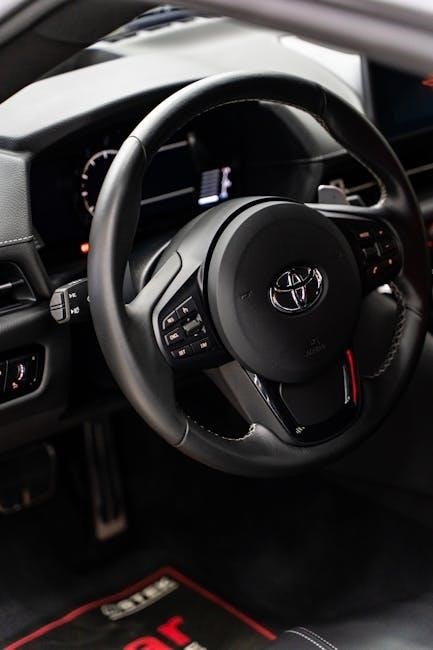
Types of Mercury DTS Controls
Mercury DTS controls are available in various configurations to suit different boating needs, including panel mount, side mount, and dual handle console mount options.
3.1 Panel Mount DTS Controls
Panel Mount DTS Controls are designed for seamless integration into a boat’s dashboard or control panel. These controls offer a compact, space-saving design that is ideal for boats with limited console space. They provide smooth shifting and instant throttle response, ensuring precise control over the vessel’s speed and direction. The ergonomic design allows for comfortable operation, reducing fatigue during extended use. Made from durable, marine-grade materials, these controls are built to withstand harsh marine environments. They are also compatible with SmartCraft technologies, enabling advanced monitoring and customization of engine performance. Panel Mount DTS Controls are a popular choice for their ease of installation and intuitive functionality.
3.2 Side Mount DTS Controls
Side Mount DTS Controls are designed for boats with specific ergonomic needs, offering a unique installation option. These controls are mounted on the side of the console, providing easy access and a natural hand position for operators. They are ideal for vessels requiring precise control in tight spaces or for drivers who prefer a side-mounted configuration. Side Mount DTS Controls feature the same advanced digital throttle and shift technology as other models, ensuring smooth shifting and responsive performance. Their robust construction withstands marine conditions, and they integrate seamlessly with SmartCraft systems for enhanced functionality. This design is favored by boaters seeking a customized control layout that complements their driving style and vessel setup.
3.3 Dual Handle Console Mount Controls
Dual Handle Console Mount Controls offer a premium control solution for boaters needing precise command over multiple engines. Designed for vessels with twin or triple engine setups, these controls provide independent throttle and shift operation for each engine. The ergonomic dual-handle design allows for smooth, intuitive control, reducing operator fatigue during extended use. Built with durable materials, they withstand harsh marine environments while delivering responsive performance. These controls integrate seamlessly with Mercury’s SmartCraft system, enabling advanced monitoring and control of engine parameters. Dual Handle Console Mount Controls are ideal for experienced boaters who demand ultimate control and customization, making them a popular choice for high-performance applications.

Installation and Setup of DTS Controls
Installation and setup of Mercury DTS Controls require careful planning and precise execution. Ensure all mechanical and electrical components are properly aligned and secured. Follow Mercury’s guidelines to guarantee optimal performance and seamless system integration.
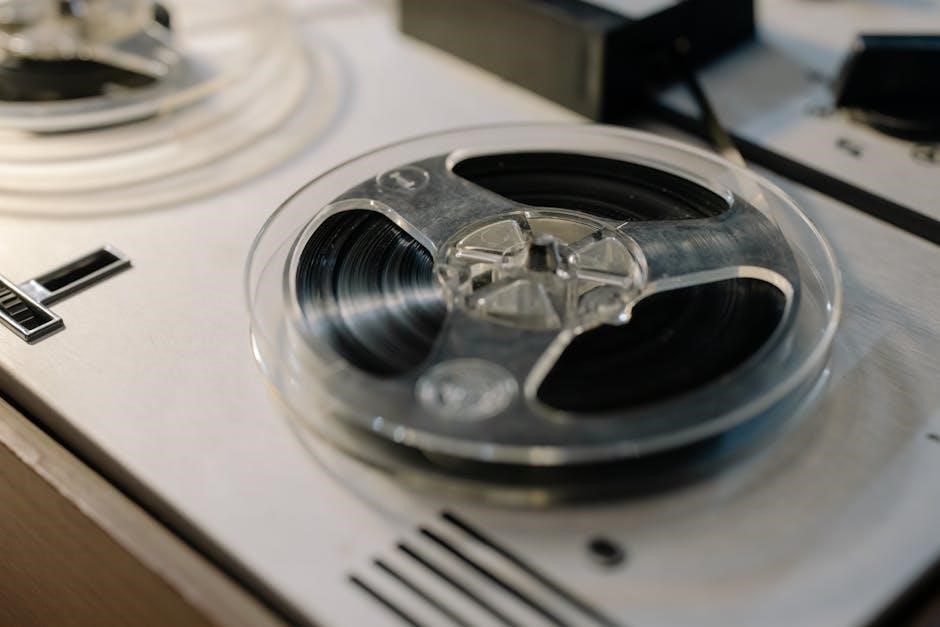
4.1 Hardware Installation Requirements
Installing Mercury DTS Controls requires precise adherence to hardware specifications. Ensure the control unit is mounted securely in a dry, vibration-free location. The wiring harness must be properly connected to the engine and SmartCraft system, avoiding any damage or interference. Sensors, such as throttle position and gear indicators, should be accurately calibrated and installed according to Mercury’s guidelines. Proper alignment of the shift and throttle mechanisms is critical for smooth operation. Use only Mercury-approved connectors and cables to maintain system integrity. Verify all electrical connections are secure and meet voltage requirements. Finally, test the system thoroughly before full operation to ensure all components function correctly.
4.2 Software Configuration Steps
Configuring the software for Mercury DTS Controls involves several steps to ensure optimal performance. Begin by downloading and installing the latest Mercury DTS software from the official website. Connect the control system to a compatible device using a USB or CAN bus interface. Use Mercury’s diagnostic tool to upload the software to the DTS controls. Calibrate the throttle and shift sensors by following the on-screen prompts. Adjust parameters such as engine trim, shift sensitivity, and throttle response according to your preferences. Save the settings and perform a system test to verify functionality. Refer to the manual for detailed instructions and troubleshooting tips to ensure a smooth setup process.
4.3 Integration with Existing Systems
Mercury DTS Controls are designed to seamlessly integrate with existing marine systems, enhancing overall vessel performance. Compatibility with SmartCraft technologies allows for synchronized operation of engines, gauges, and displays. The system can also connect to multi-function displays and other control units via CAN bus technology. For older systems, adapters or interface modules may be required to ensure compatibility. The manual provides detailed instructions for integrating DTS controls with various marine electronics. Proper integration ensures real-time data synchronization, enabling advanced features like automatic trim adjustment and synchronized throttle-shifter functions. This capability streamlines vessel operation and enhances the boating experience. Always follow the manual’s guidelines for a smooth and successful integration process.

Operating the Mercury DTS Controls
Engage throttle and shift modes effortlessly with intuitive controls. Adjust settings for smooth operation and utilize features like Active Trim for optimal performance. Monitor system metrics efficiently.
5.1 Basic Operations and Functions
Mastering the fundamental operations of Mercury DTS controls ensures seamless vessel control. Start by familiarizing yourself with the control layout, including the throttle, shift lever, and mode buttons. Engage the system by turning the ignition and verifying all indicators light up. Use the throttle for speed adjustment and the shift lever to transition between neutral, forward, and reverse gears smoothly. The neutral position is ideal for docking or idling. Adjust the sensitivity of throttle and shift responses via the control panel. Utilize the integrated display to monitor RPM, speed, and trim levels. Always ensure the system is in neutral before starting the engine and refer to the manual for specific startup procedures. Regular practice enhances control precision and operational confidence.
5.2 Advanced Features and Settings
The Mercury DTS controls offer advanced features designed to enhance boating experiences. Users can access customizable settings through the control panel, allowing adjustments to throttle sensitivity, shift smoothness, and response times. The system also supports multiple driving modes, such as ECO mode for fuel efficiency and Sport mode for rapid acceleration. Active Trim technology automatically optimizes engine trim for improved performance. Additionally, the DTS controls integrate seamlessly with SmartCraft technologies, enabling real-time monitoring of engine data and vessel status; Advanced diagnostics and programmableShift and throttle curves ensure precise control. These features provide a tailored experience, making the Mercury DTS system highly adaptable to various boating preferences and conditions. Regular exploration of these settings can significantly enhance overall performance and satisfaction.
5.3 Active Trim System Operation
The Active Trim system on Mercury DTS controls automatically adjusts the engine trim for optimal performance. It continuously monitors boat speed and trim angle, making precise adjustments to maintain ideal hull positioning. This results in improved fuel efficiency, reduced bow rise, and enhanced stability. The system operates seamlessly in the background, eliminating the need for constant manual adjustments. Users can also manually override the system if needed, using the trim switches on the control. The Active Trim system is particularly beneficial during acceleration and turning maneuvers, ensuring a smooth and responsive boating experience. Regular use of this feature can significantly enhance overall vessel performance and handling capabilities.
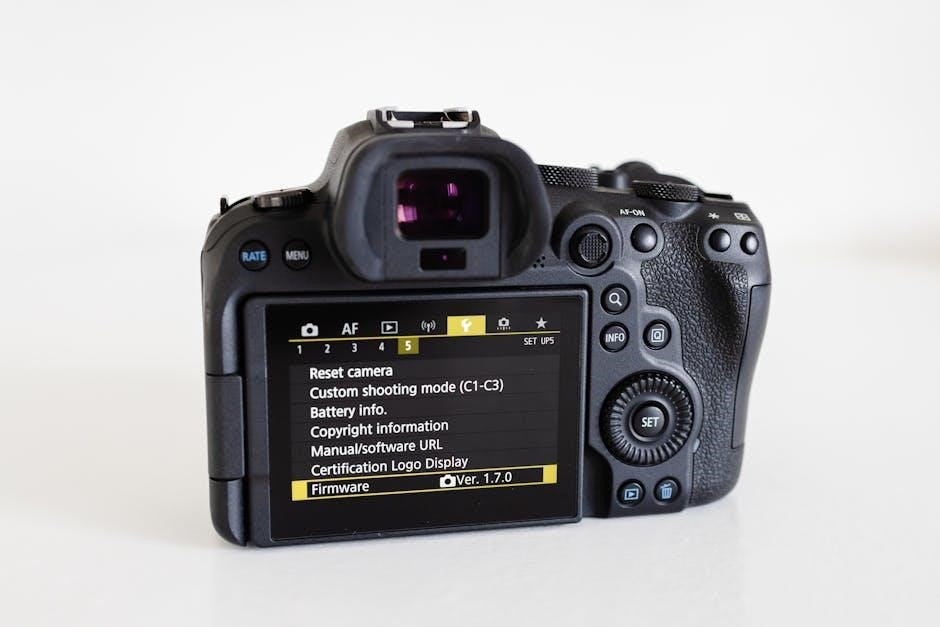
Troubleshooting Mercury DTS Controls
Troubleshooting Mercury DTS Controls involves identifying symptoms, checking wiring, and consulting the manual. Advanced diagnostic tools help resolve issues efficiently, ensuring optimal system performance.
6.1 Common Issues and Solutions
Common issues with Mercury DTS Controls include throttle delay, erratic shifting, or connectivity problems. Solutions involve checking wiring connections, cleaning corrosion, and recalibrating the system. For shifting issues, ensure proper alignment of components. If the Active Trim system malfunctions, reset it or update firmware. Always refer to the manual for specific troubleshooting steps. Regular maintenance, like cleaning connectors and updating software, prevents many problems. Addressing issues early ensures smooth operation and extends system lifespan.
- Throttle Delay: Check for worn or dirty connectors and clean them thoroughly.
- Erratic Shifting: Recalibrate the system or replace worn shift components.
- Connectivity Issues: Reset the system or re-pair the control with the engine.
- Active Trim Malfunction: Perform a system recalibration or consult the manual for reset procedures.
Preventive maintenance is key to minimizing downtime and ensuring optimal performance.
6.2 Diagnostic Tools and Techniques
Mercury DTS Controls offer advanced diagnostic tools to identify and resolve issues efficiently. The system includes LED indicators, error codes, and software diagnostics to pinpoint faults. Users can access real-time data through the SmartCraft interface, monitoring throttle and shift performance. Diagnostic tools also include system reset options and calibration checks. For deeper analysis, authorized technicians can use Mercury’s proprietary diagnostic software to review system logs and perform advanced troubleshooting. Regular use of these tools ensures timely detection of potential issues, minimizing downtime and maintaining optimal performance. Always consult the manual for detailed instructions on using diagnostic features effectively.
- LED Indicators: Provide visual alerts for system status and errors.
- Error Codes: Specific codes help identify the source of issues quickly.
- Software Diagnostics: Detailed logs and real-time monitoring for precise fault identification.
- System Reset: Restores default settings to resolve software-related problems.
These tools simplify troubleshooting and ensure accurate repairs, keeping the system running smoothly.
6.3 Resetting the DTS System
Resetting the Mercury DTS system is a straightforward process to restore factory settings or resolve software-related issues. A soft reset can be performed by turning off the ignition, waiting 30 seconds, and restarting the engine. This method retains custom settings. For a hard reset, access the diagnostic menu via the SmartCraft display, navigate to the reset option, and confirm. This restores all settings to default, so ensure configurations are backed up. Resetting can resolve glitches, calibration errors, or communication issues. Always refer to the manual for detailed reset procedures specific to your system. Resetting does not affect hardware functionality but ensures optimal software performance.
- Soft Reset: Quick fix without losing custom settings.
- Hard Reset: Restores factory defaults; use cautiously.
- Diagnostic Menu: Accessible via SmartCraft for advanced resets.
Resetting is a reliable solution for troubleshooting and maintaining system efficiency.
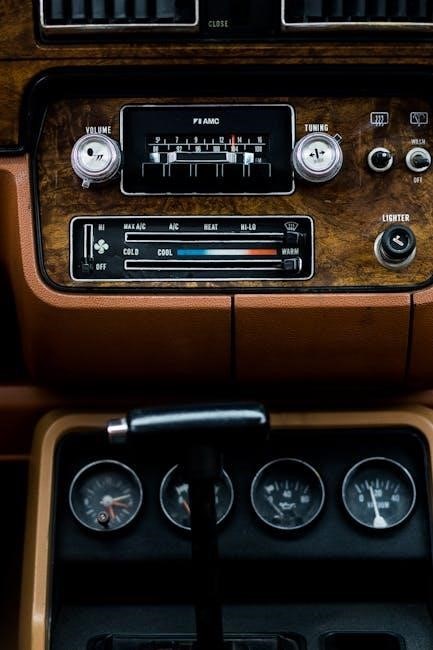
Maintenance and Care of DTS Controls
Regular maintenance ensures optimal performance and longevity of Mercury DTS controls. Inspect for wear, clean surfaces, and protect from environmental factors like moisture and UV exposure.
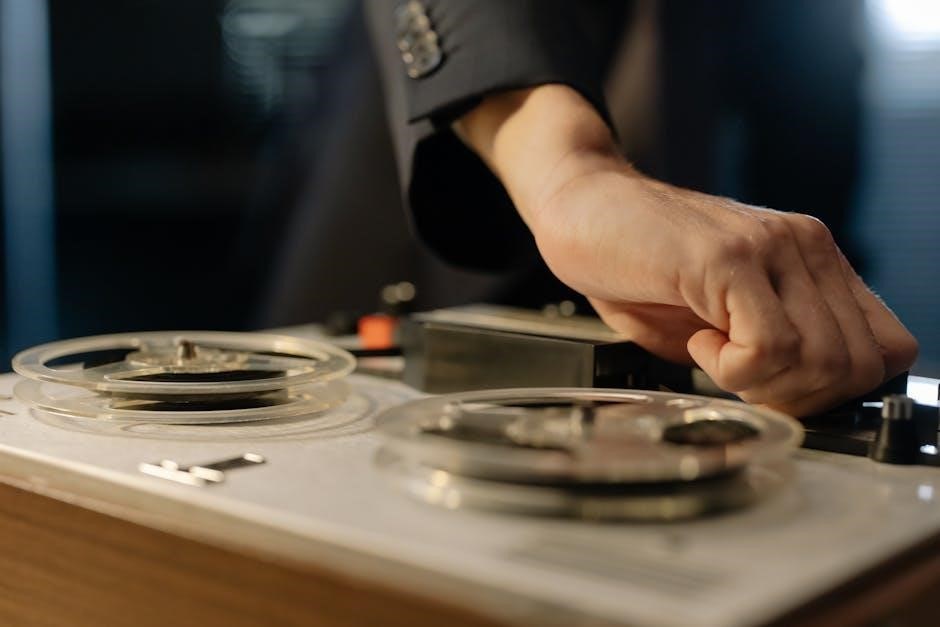
- Inspect wiring and connections for damage or corrosion.
- Clean control surfaces with mild detergents to prevent debris buildup.
- Apply protective coatings to shield against harsh marine conditions.
Proper care extends system lifespan and maintains reliability;
7.1 Routine Maintenance Procedures
Regular maintenance is crucial to ensure the longevity and optimal performance of Mercury DTS controls. Start by inspecting the wiring and connections for any signs of wear or corrosion, addressing issues promptly. Clean the control surfaces with a mild detergent and water to remove dirt or grime buildup. Lubricate moving parts, such as hinges and throttle linkages, to maintain smooth operation. Additionally, check the software for updates and install the latest firmware to keep the system running efficiently. Schedule these procedures seasonally or as recommended in the manual to prevent malfunctions and ensure consistent reliability on the water.
- Inspect wiring harnesses for damage or corrosion.
- Clean control surfaces with mild detergent and water.
- Lubricate moving parts to maintain smooth operation.
- Check for and install software updates.
Following these steps ensures the DTS system performs at its best.
7.2 Cleaning and Protection Tips
To maintain the appearance and functionality of Mercury DTS controls, regular cleaning and protection are essential. Use a soft, dry cloth to wipe down surfaces, removing dirt or salt residue. For tougher stains, apply a mild detergent diluted in water, avoiding harsh chemicals or abrasive materials that could damage finishes. Rinse thoroughly with fresh water and dry to prevent spotting. Apply a UV-protectant spray to prevent fading from sunlight exposure. For buttons and touchscreens, use an alcohol-based cleaner (50% or less) to avoid damaging sensitive electronics. Finally, cover the controls when not in use to shield them from dust and moisture. These steps ensure long-term durability and performance.
- Use a soft cloth for routine cleaning.
- Apply mild detergent for stubborn stains.
- Protect surfaces with UV-protectant sprays.
- Use alcohol-based cleaners for buttons and screens.
- Cover controls when not in use.
Proper care ensures the controls remain functional and visually appealing.
7.3 Upgrading Firmware and Software
Upgrading the firmware and software of Mercury DTS controls is crucial for optimal performance and accessing new features. Always download updates from Mercury Marine’s official website to ensure compatibility and security. Use a compatible USB drive to transfer the update files to the control system. Follow the on-screen instructions carefully during the installation process. After completion, test the system to ensure all functions operate correctly. Regularly check for updates to maintain system reliability and take advantage of improvements. Keeping the firmware and software up-to-date ensures your Mercury DTS controls remain efficient and responsive.
- Download updates from the official Mercury Marine website.
- Use a compatible USB drive for file transfer.
- Follow on-screen instructions for installation.
- Test the system post-update to confirm functionality.
- Regularly check for new updates.
Updates enhance performance and add new capabilities to your controls.
The Mercury DTS controls manual provides comprehensive guidance, ensuring enhanced boating experiences through advanced technology and ease of control. Proper use and maintenance optimize performance and longevity.
8.1 Summary of Key Points
The Mercury DTS controls manual is a comprehensive guide covering installation, operation, and maintenance. It highlights the system’s advanced features, such as smooth shifting and instant throttle response, designed to enhance boating experiences. Proper setup, including hardware installation and software configuration, ensures optimal performance. Regular maintenance, including cleaning and firmware updates, is crucial for longevity. Troubleshooting sections provide solutions for common issues, while diagnostic tools aid in system monitoring. By following the manual’s guidelines, users can maximize the potential of their Mercury DTS controls, ensuring reliability and efficiency on the water. Adhering to these principles guarantees a seamless and enjoyable boating experience.
8.2 Final Tips for Optimal Performance
To maximize the performance of Mercury DTS controls, always follow the manual’s guidelines for installation, operation, and maintenance. Regularly inspect and maintain hardware components to ensure smooth functionality. Adjust throttle and shift settings to suit your driving style for enhanced control. Monitor system diagnostics to address issues promptly. Keep the controls clean and protected from environmental factors. Stay updated with the latest software and firmware to benefit from performance improvements. Store the system properly during off-seasons to prevent damage. Practice smooth throttle and shift operations to reduce wear and tear. Finally, familiarize yourself with advanced features to unlock the full potential of your Mercury DTS controls.

